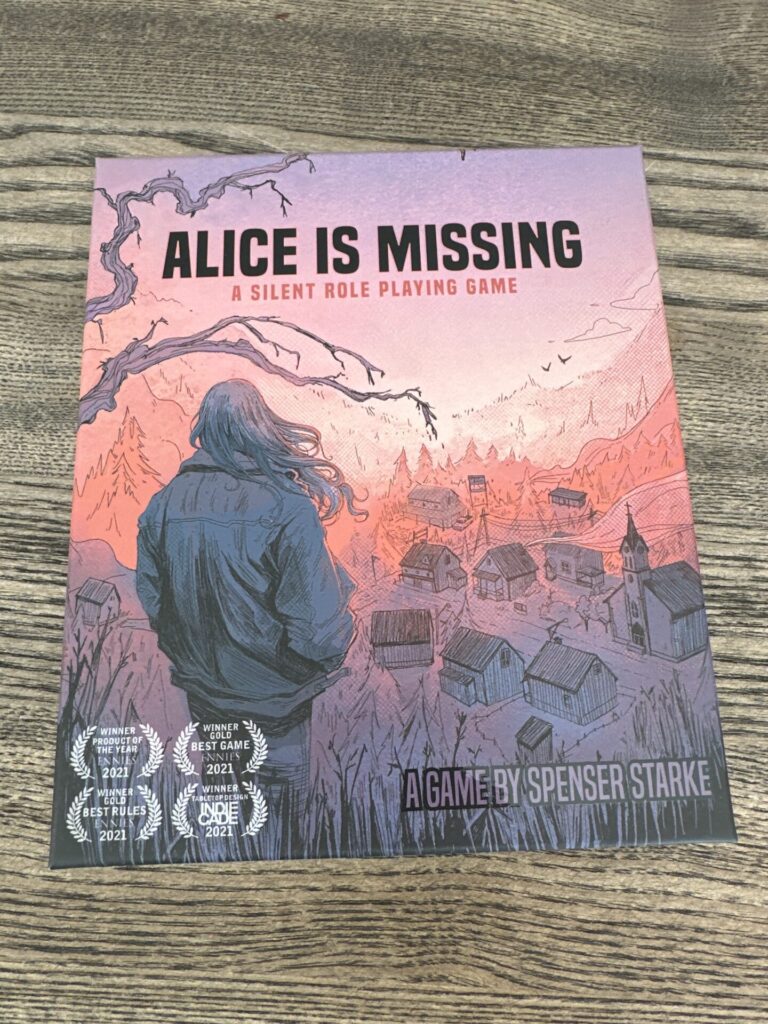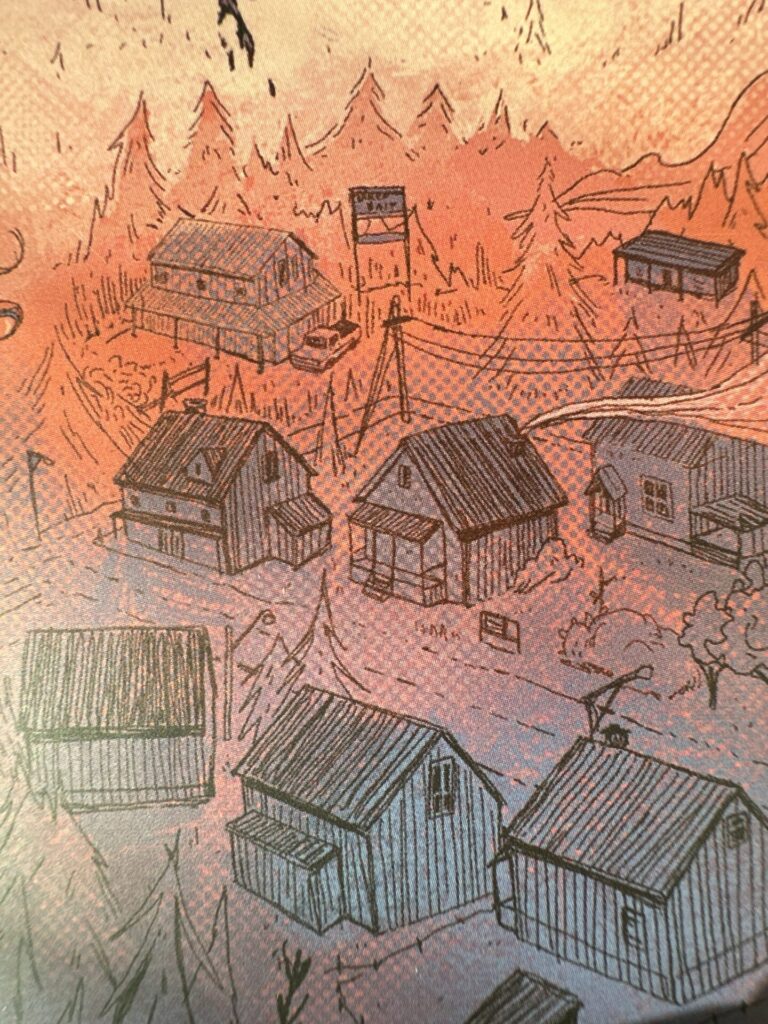They had me at “a quiet roleplaying game”. All roleplaying games are a conversation, whether that’s at the table or over videochat – how does a quiet roleplaying game even work? In Alice Is Missing, the players are all in the same space physically, but talking is not allowed. Instead, you text on your phone.

The game setup is very board game like. Characters and the game setting are built from prompt cards. There are no stats, dice, or conflict mechanics. After setup, players sit down for 90 minutes, and shut up – all communication happens through text messages sent in-character (we used WhatsApp). This is very immersive as all players change the other players’ names to their in-game characters’ names.
Their friend Alice is missing, and the players have 90 minutes to find out what happened. The characters have a little more than that, as the game’s events are supposed to happen over the course of a day or so.
There is no GM. One player needs to be a facilitator who knows the rules and guides the setup, but they participate like the others, except they need to pick a specific character to play, and be the first one to text in-game, starting the game. Nobody knows what happened to Alice until the end of the game.
Time & ritual
The strict 90 minute timeline can be a boon in that it gives structure to the game, much like something like The Mountain Witch. On the other hand, many people feel pressure from a deadline, in this case literally a ticking down timer that everyone can (and needs to) see. The timer serves a dual purpose here as a mood setter, as the official Youtube video of the timer also features atmospheric music. Especially the opening and closing songs are effective.
In Alice Is Missing the timer works, primarily because it’s not a big deadline for everyone, but rather a series of mini-goals: something happens every ten minutes or so, and everyone participates by following the timed prompt cards dealt out at the beginning of the game. Depending on the cards you got, your own goals might be the 70 and 20 minute marks, and only if you have the last 10 minute card (which you won’t get until the very end – it’s not dealt out in the beginning), does the big timer become “your timer”. This is a very smart way of getting the benefits of a timer without the downsides.
Nevertheless, we found the 90 minute length problematic. People felt enough pressure to progress with the plot that most of us didn’t pay any attention to the relationships between the characters, or indeed the motivation of our own character. When we play again, we’re going to trust that the prompt cards will take care of the plot progression, and player focus should be on character drama. The game could’ve done a better job in preparing us for that.

Dangerous mechanics
There is a back-up mechanic of “exploration” to help groups out of plot dead ends. I’m not sure it’s very useful. You can choose to explain that you’re investigating a location, and draw an exploration card, revealing something suspicious that you found, to then work back into the narrative.
Even though the game did warn to only use this if we’re really stuck, the force of narrative and thematic curveballs the exploration cards threw was unexpected, and felt out of place in the game’s narrative world. They felt more like Fiasco elements – bags of money, suspicious discarded masks, and the like.
Again, the game did explain that these should be a last resort option, and we should’ve listened to that. But if you put a mechanic into your game, with a special deck to draw from, no less, players are going to want to play with it.
Great mechanics
As a narrative limitation, the player characters can’t meet during the game, explaining why everything happens in the text chat. Instead, should a meeting look like the logical next step, all players are expected to work together to prevent that in the fiction.
During the game setup, all players record a voice message in private that they’ve left Alice before they knew they were missing. At the end of the game, these messages are played back to the whole group, as the closing song plays. This is a very strong way of opening and closing the fictional circle of the game.
Conclusion
It’s a cool game, and everyone in my initial group felt like playing again. There was also discussion that the format of Alice Is Missing might work for other games, too, and that the next time we play, we’ll consider adding a prequel, maybe an hour without any events to just settle into the characters more thoroughly, and set up social dynamics.
Leave a Reply